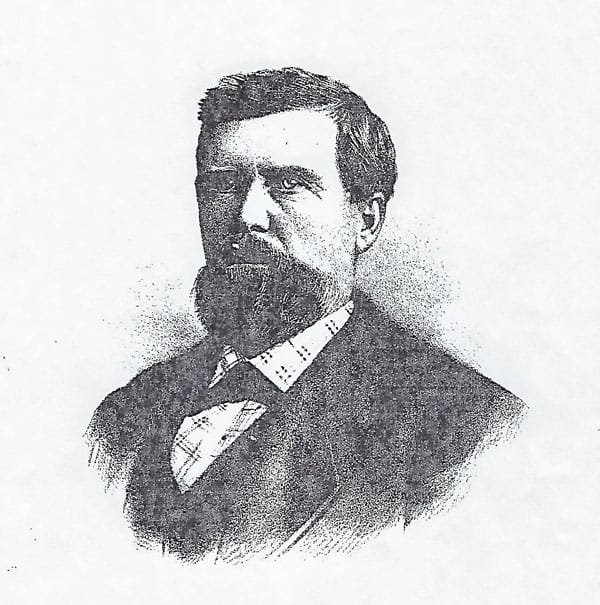D. C. Oakes: Famous and Infamous

By Joe Gschwendtner; photo courtesy of Heritage Collection “History of City and Arapahoe County,” 1880

Portrait of D.C. Oakes, circa 1880.
Major D.C. Oakes struck pay dirt in the California Gold Rush. Returning to Iowa in 1853 to marry, he invested his $6,000 profit in a contracting business. When the business faltered and money dwindled, he chased rumors of gold in Colorado.
In 1858, Oakes connected with Green Russell’s men who were having modest success in Cherry Creek. Seeking the source of placer gold, they headed to higher elevations near Franktown (today’s Russellville), only to strike out. Oakes again returned to Iowa, this time carrying a copy of Luke Tierney’s account of the Russell’s expedition.
In 1859, Oakes co-edited a book, “History of the Gold Discoveries on the South Platte River” under Tierney’s name. Appended to the book was Oakes’ and Stephen Smith’s “A Guide of the Route.” Their optimistic tale (as with others of the time) inflated the opportunity for Colorado riches. The proof: some 150,000 59ers migrated west the following year in the “Great Race to the Rockies.”
Not surprisingly, Oakes was unloved by many. Those coming to Colorado endured the hazards of uncharted lands and grueling hardships, with some encountering warring Indians. And they found no gold, feeling swindled. Oakes once happened across a pile of bones on the trail with a sign that read: “Here lies D.C. Oakes, who was the starter of this damn hoax.”
Oakes was clever. The major found his gold by profiting from the needs of onrushing fortune-seekers. Thus, he set up a steam-driven sawmill in Riley’s Gulch (Daniels Park Road) right across from the Pretty Woman Ranch and sold lumber. At one time employing 35 men, “Oakes’ Mill” was the second settlement in Douglas County.
Indian tribes were still at large in the early 60s when Oakes relocated further south. There, with his sawmill and a clay pit he developed, Oakes built Fort Lincoln in Huntsville (Larkspur’s Jellystone Campground). Thirty families would move into the stockade for their safety, remaining until all Indians had fled the area. Unfortunately, while absent, their homes were burned and their stock driven off.
Over time, Oakes’ influence grew. A good friend of Kit Carson, he often rode with him and was at Carson’s last campfire made near today’s Sanctuary golf course. In 1865, he was appointed Indian Agent for the Grand River, Yampah, and Uintah Indians by President Andrew Johnson. A prestigious position, he moved up to a home at 11th and Curtis in Denver. There, he was known to entertain Native American guests who liked him enough to call him “Father.” He was also given a seat on Denver’s first city council. In 1869, Oakes became Deputy U.S. Land Surveyor.
Little of his family is known, other than his having eight daughters. Given the buckskin garb of the day, he was a breed apart, a fashionable dresser with a passion for silk underwear. In the flesh, he was larger than life. That he was an extraordinary, impactful Colorado pioneer is indisputable. Whether he was a huckster or hero, well … it all depends on your perspective.